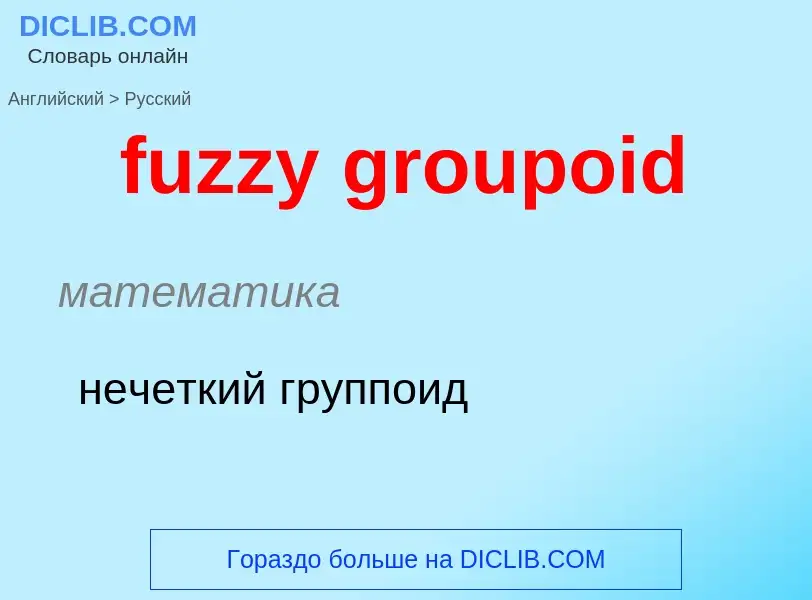Μετάφραση και ανάλυση λέξεων από την τεχνητή νοημοσύνη ChatGPT
Σε αυτήν τη σελίδα μπορείτε να λάβετε μια λεπτομερή ανάλυση μιας λέξης ή μιας φράσης, η οποία δημιουργήθηκε χρησιμοποιώντας το ChatGPT, την καλύτερη τεχνολογία τεχνητής νοημοσύνης μέχρι σήμερα:
- πώς χρησιμοποιείται η λέξη
- συχνότητα χρήσης
- χρησιμοποιείται πιο συχνά στον προφορικό ή γραπτό λόγο
- επιλογές μετάφρασης λέξεων
- παραδείγματα χρήσης (πολλές φράσεις με μετάφραση)
- ετυμολογία
fuzzy groupoid - translation to ρωσικά
математика
нечеткий группоид
общая лексика
группоид
общая лексика
нечёткое множество
математика
размытое (нечеткое) множество
Смотрите также
Ορισμός
Βικιπαίδεια
In mathematics, especially in category theory and homotopy theory, a groupoid (less often Brandt groupoid or virtual group) generalises the notion of group in several equivalent ways. A groupoid can be seen as a:
- Group with a partial function replacing the binary operation;
- Category in which every morphism is invertible. A category of this sort can be viewed as augmented with a unary operation on the morphisms, called inverse by analogy with group theory. A groupoid where there is only one object is a usual group.
In the presence of dependent typing, a category in general can be viewed as a typed monoid, and similarly, a groupoid can be viewed as simply a typed group. The morphisms take one from one object to another, and form a dependent family of types, thus morphisms might be typed , , say. Composition is then a total function: , so that .
Special cases include:
- Setoids: sets that come with an equivalence relation,
- G-sets: sets equipped with an action of a group .
Groupoids are often used to reason about geometrical objects such as manifolds. Heinrich Brandt (1927) introduced groupoids implicitly via Brandt semigroups.


